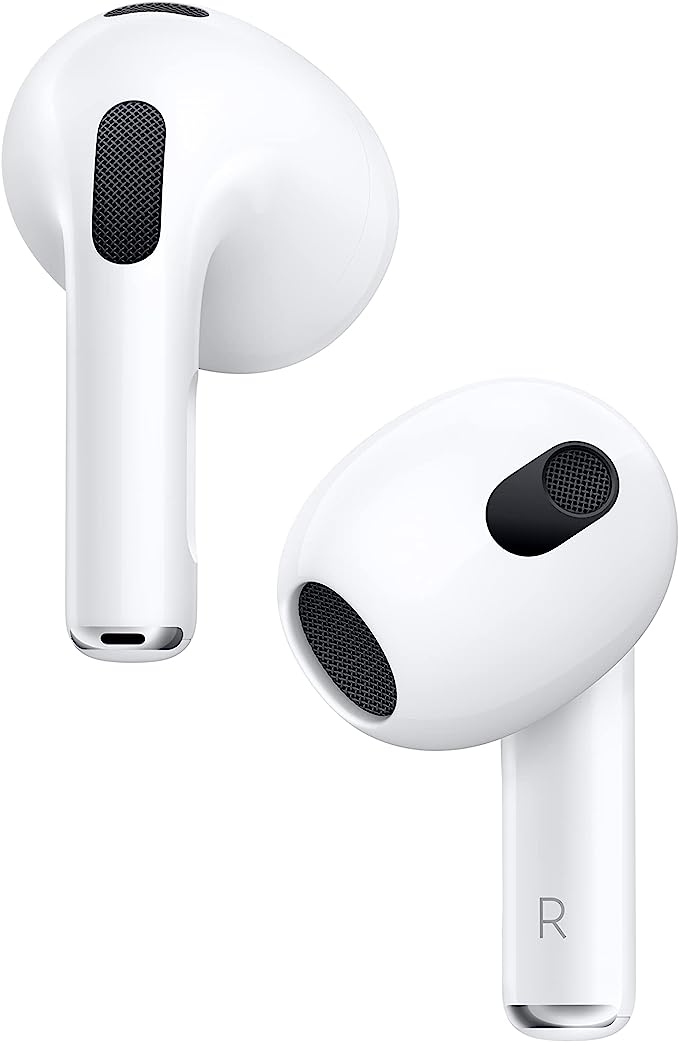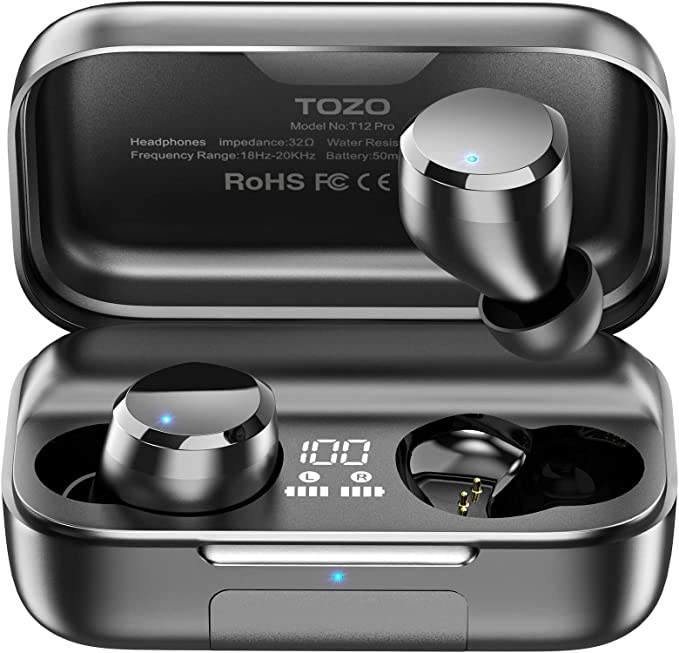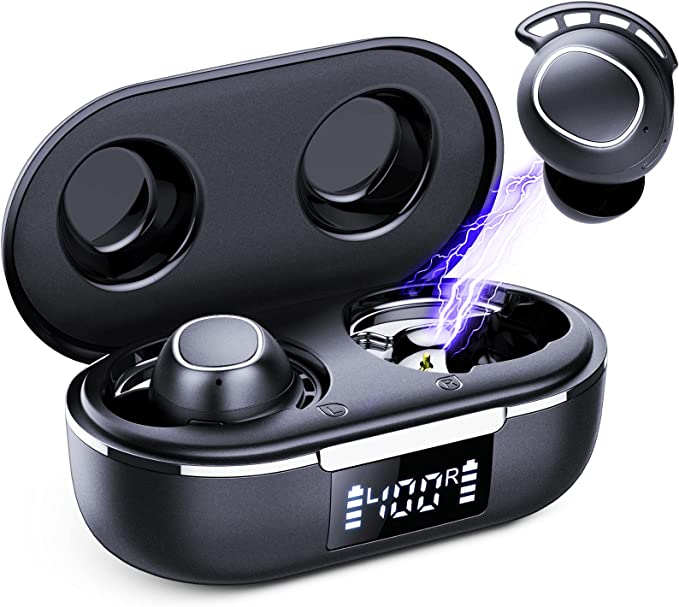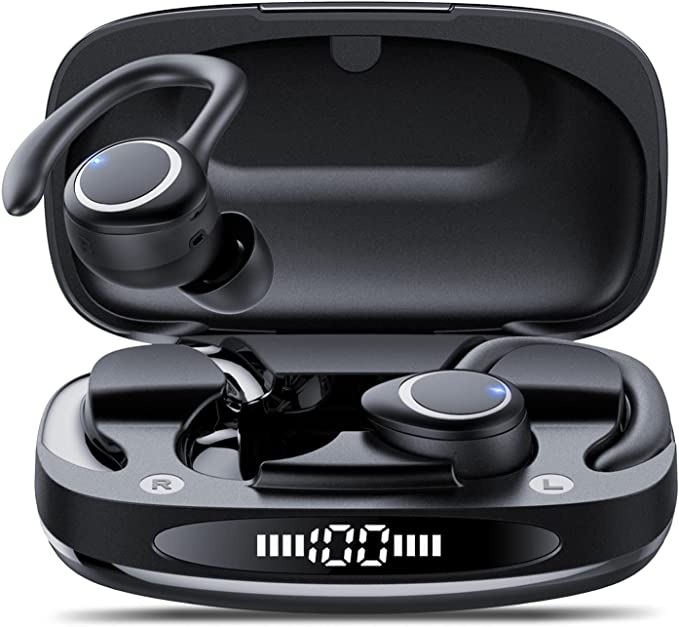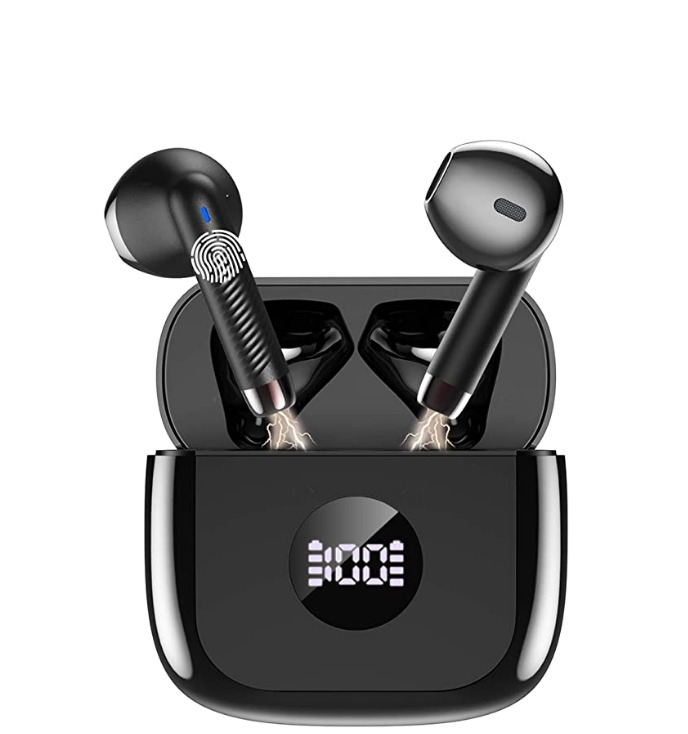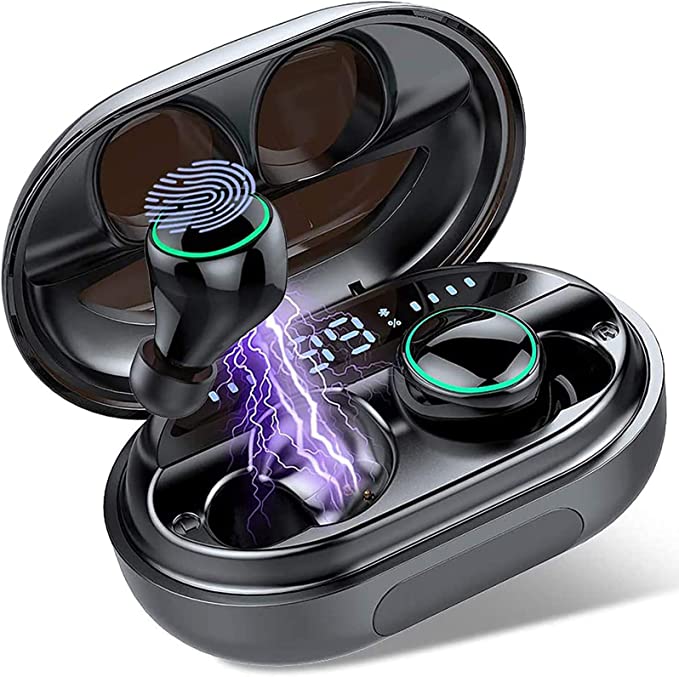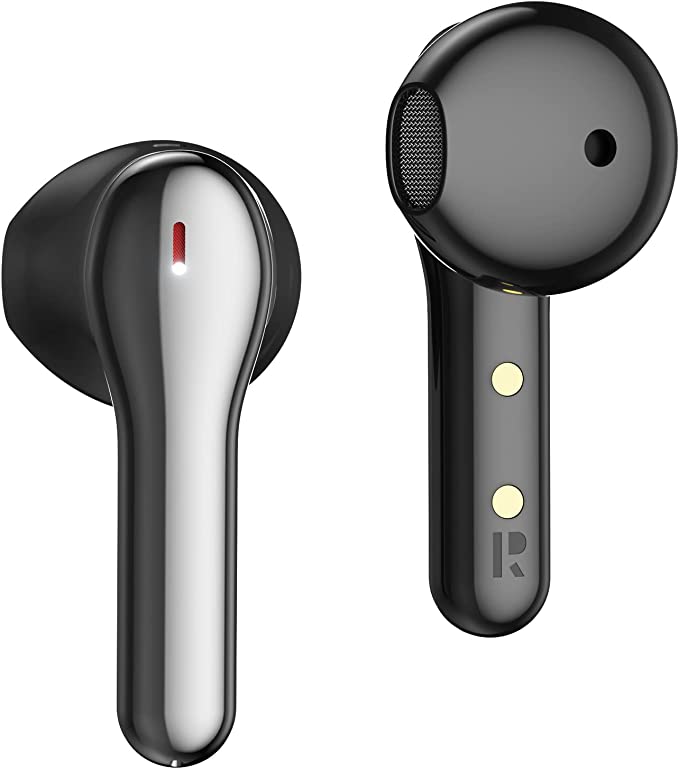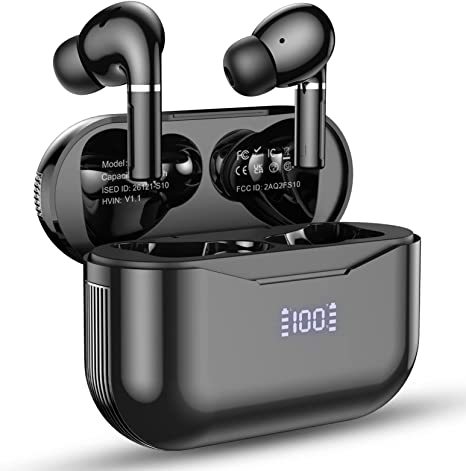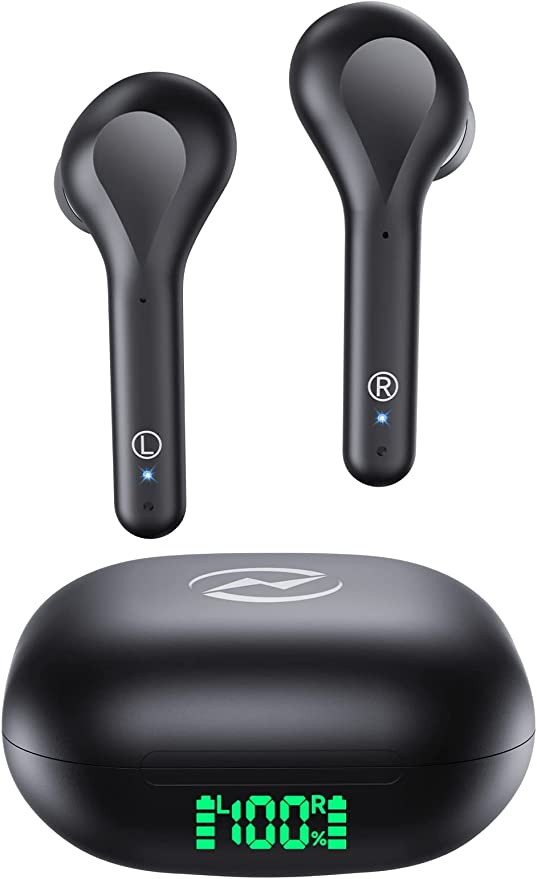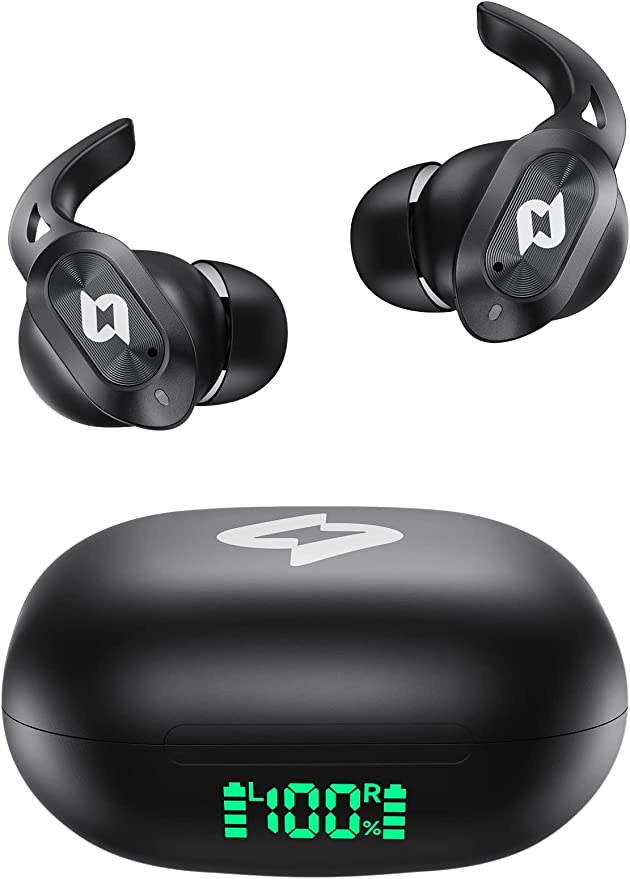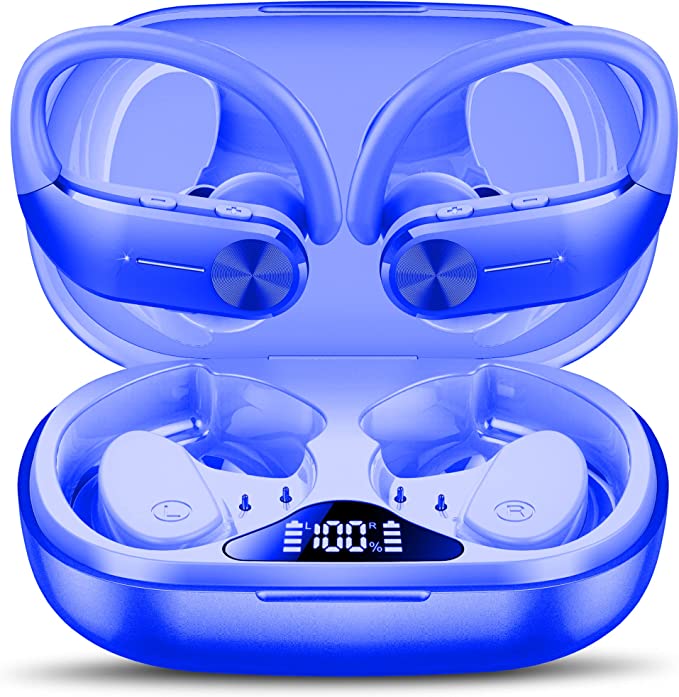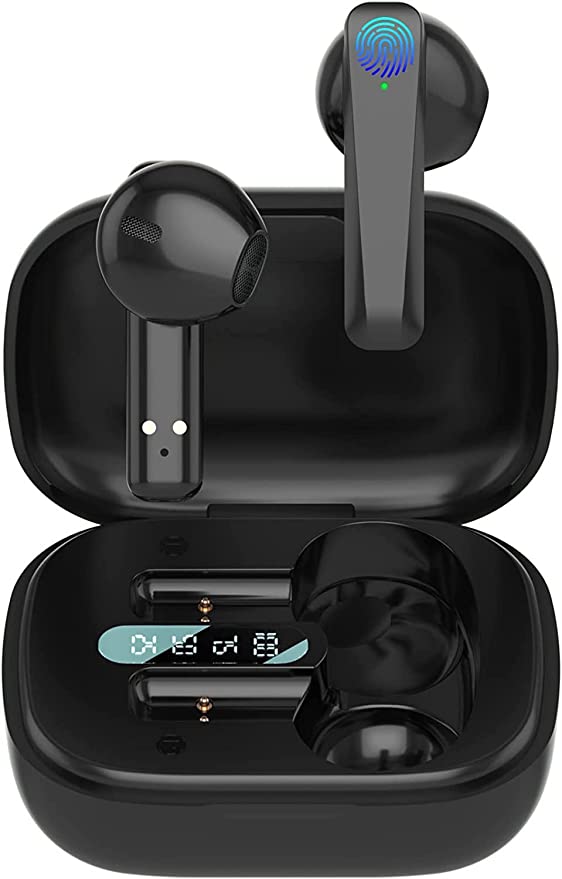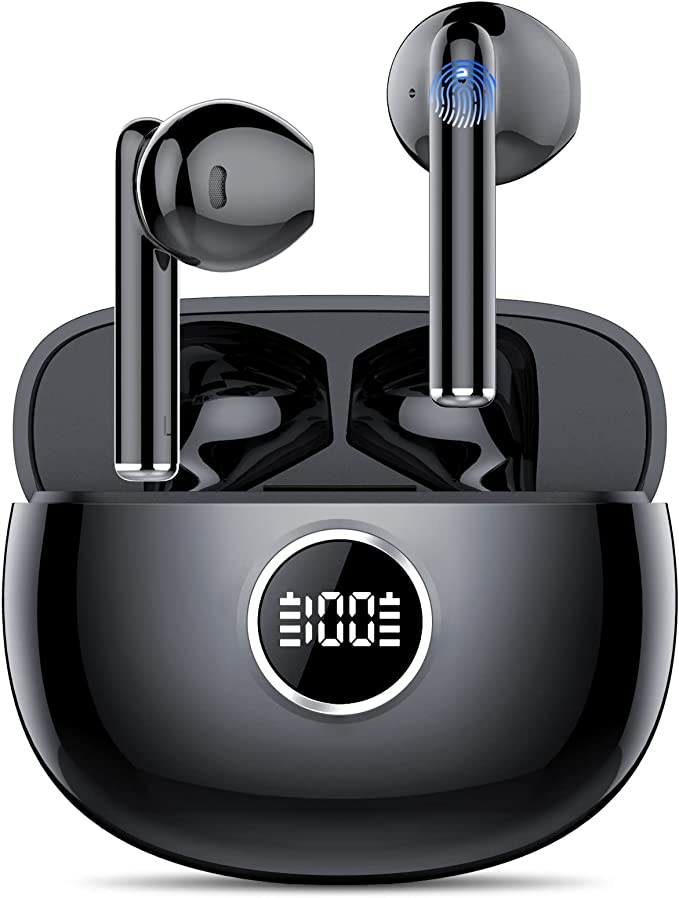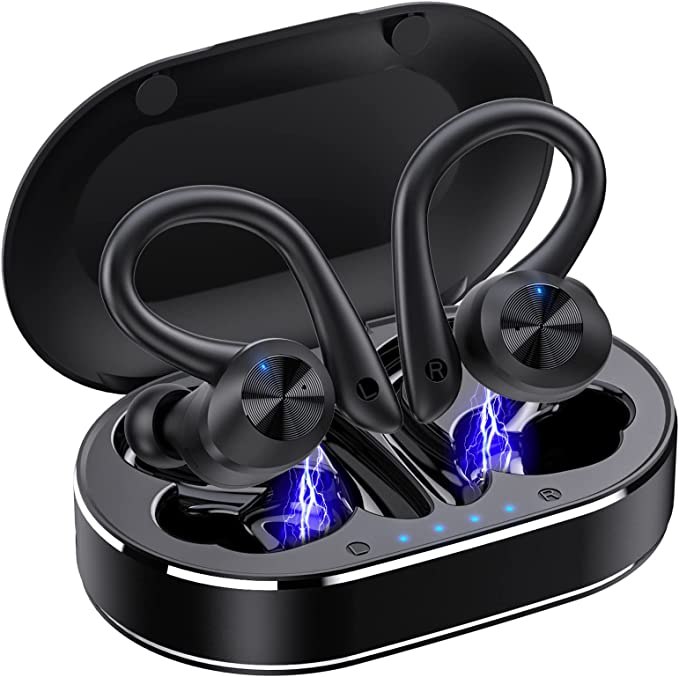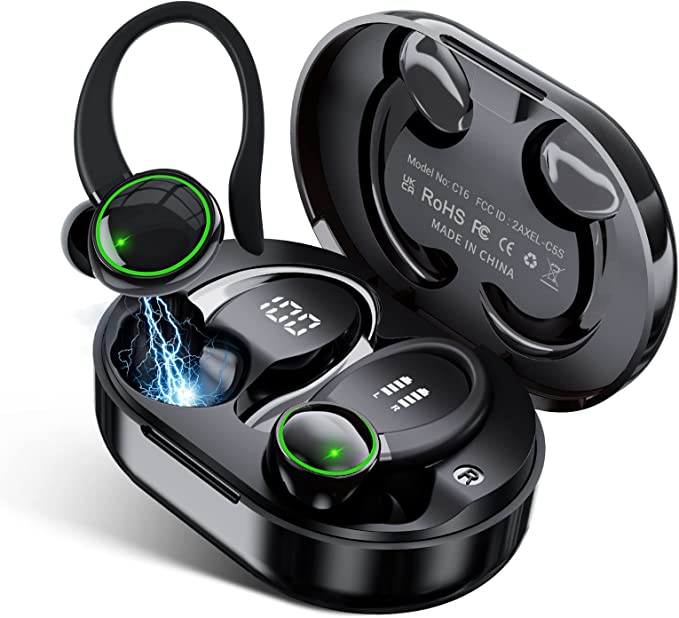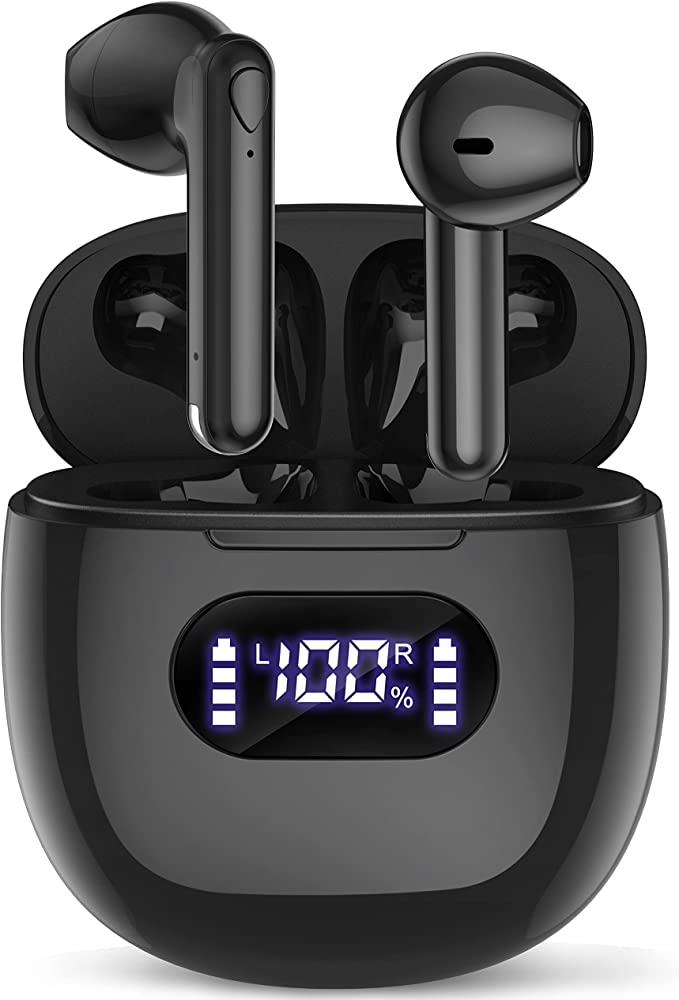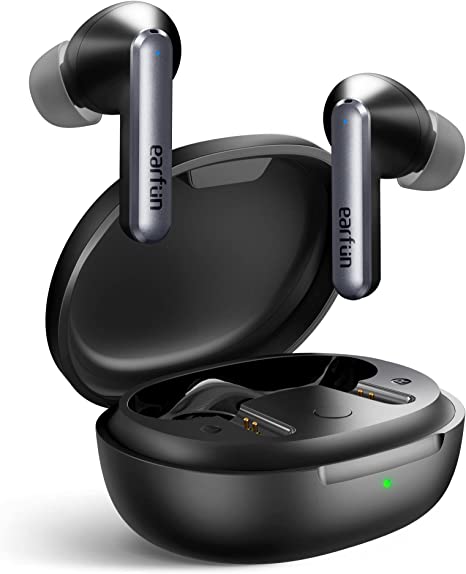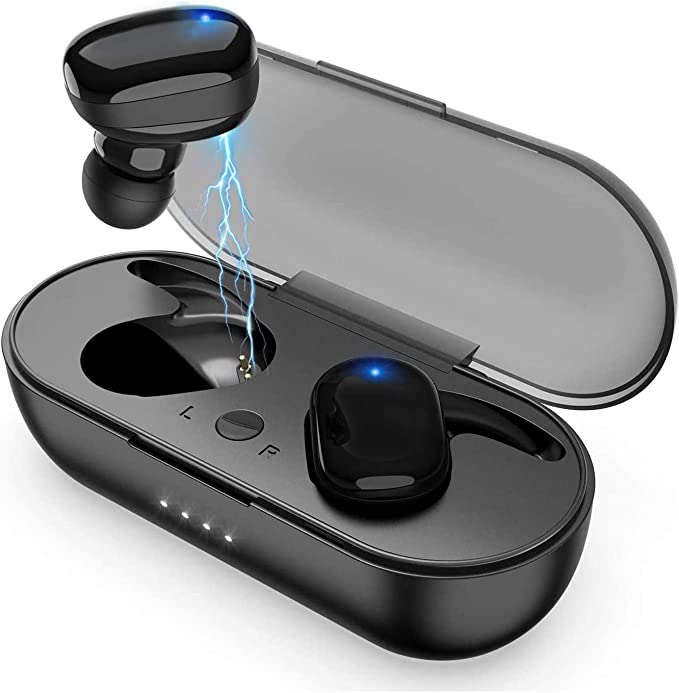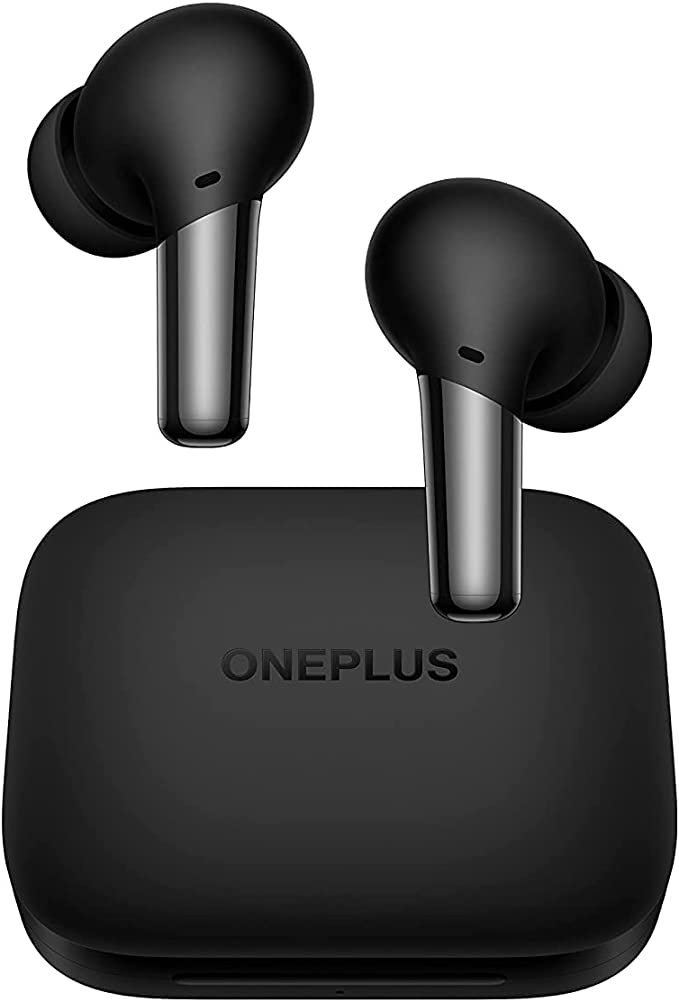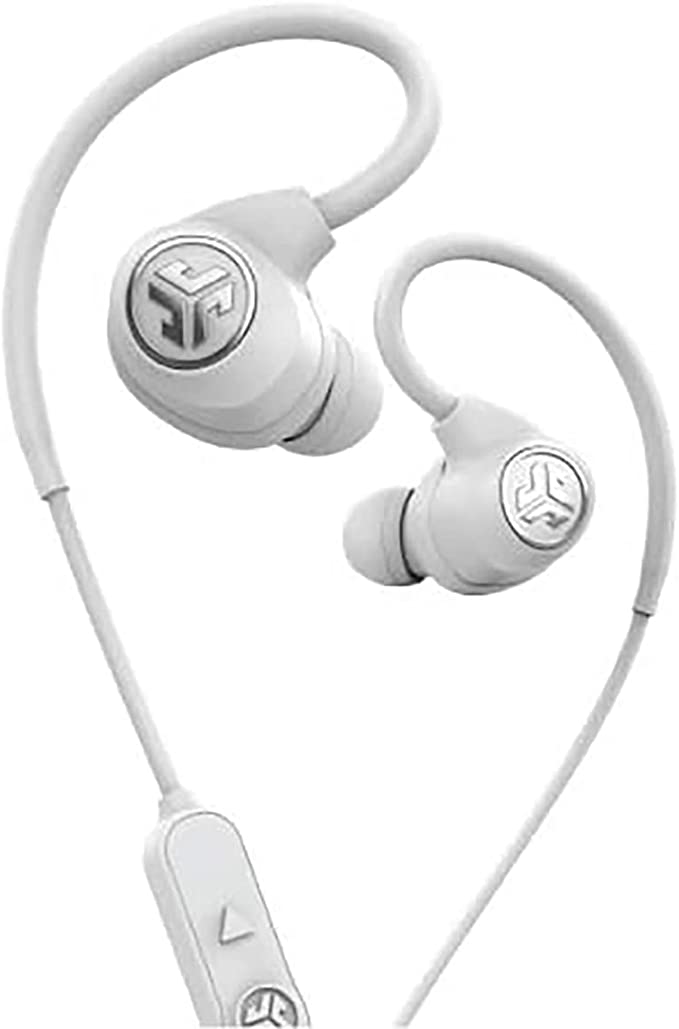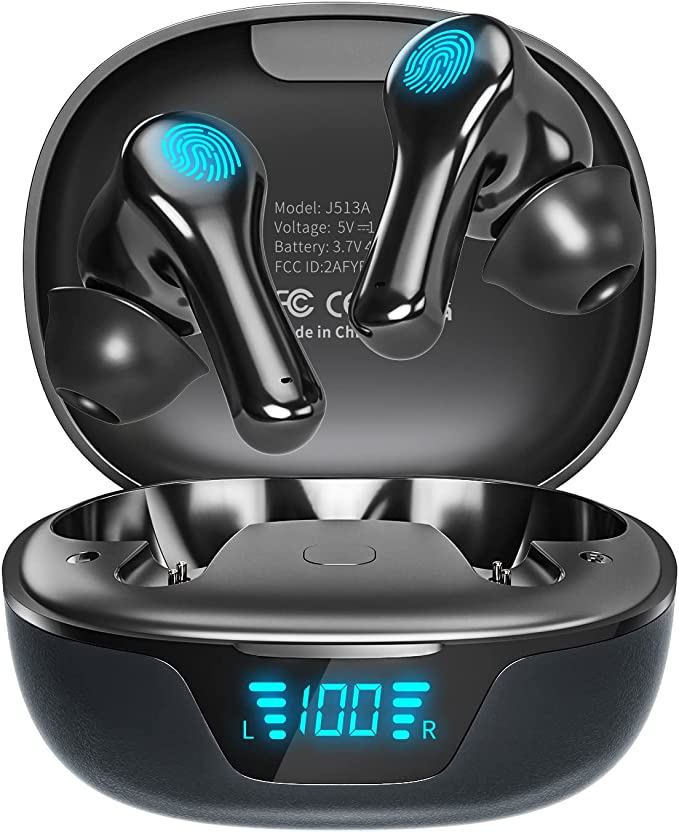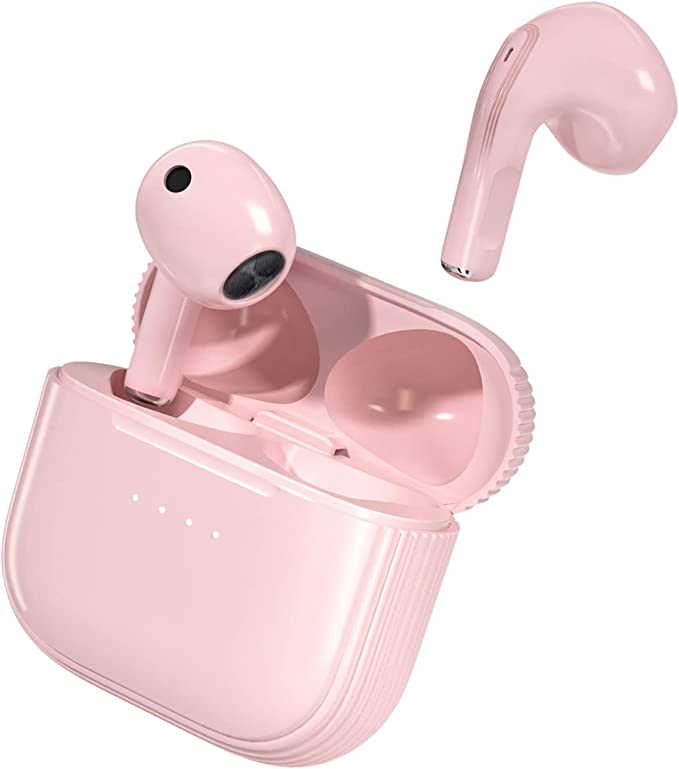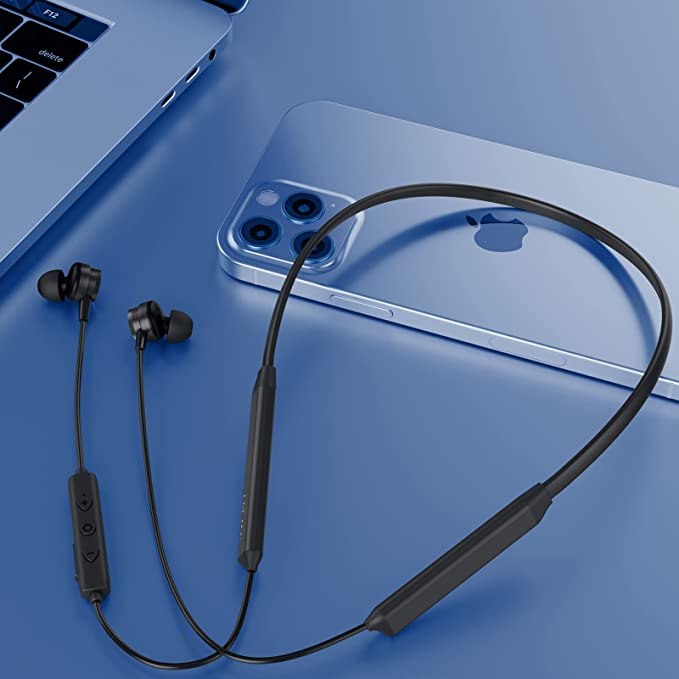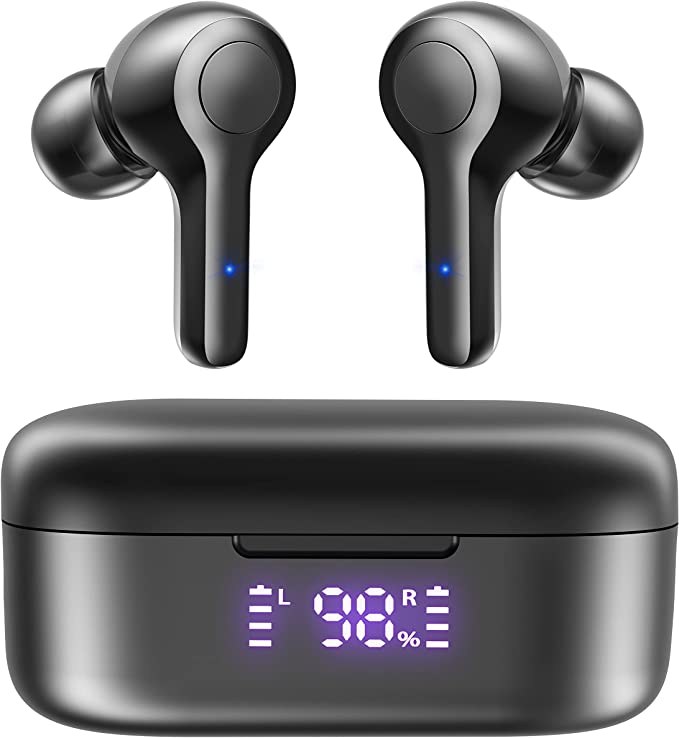QHQO H3 Wireless Earbuds: Experience Sound Without Limits
Update on May 30, 2025, 12:37 p.m.
In our hyper-connected world, true wireless earbuds have morphed from a novelty into an almost indispensable extension of our digital lives. Think about it: those tiny pods nestled in your ears deliver symphonies, keep you connected on calls, and whisper podcast wisdom, all without a single pesky wire to untangle. It’s a little bit of everyday magic, isn’t it? But have you ever paused to wonder about the sheer density of science and engineering packed into such a compact form? Today, we’ll use the QHQO H3 Wireless Earbuds, a product representative of this modern audio convenience (though currently listed as unavailable, its features provide a great blueprint for our exploration), as our “specimen.” Forget dry spec sheets; we’re embarking on an adventure to uncover the fascinating, often invisible, science that makes these everyday gadgets truly extraordinary. So, grab a metaphorical magnifying glass, and let’s dive in!

The Invisible Handshake: Decoding Bluetooth 5.2’s Wireless Waltz
At the very core of your untethered audio experience lies a technology many of us use daily but perhaps don’t fully appreciate: Bluetooth. Specifically, the QHQO H3 earbuds highlight “Advanced Bluetooth 5.2.” So, what’s the big deal, and why should you care?
Well, imagine a world where your music stutters every few minutes, or your earbuds constantly lose connection during an important call. Frustrating, right? This is where a robust Bluetooth connection becomes king. Bluetooth, in essence, is a wireless technology standard for exchanging data over short distances using UHF radio waves in the ISM band (from 2.402 GHz to 2.480 GHz). Its rather whimsical name, surprisingly, harks back to Harald “Bluetooth” Gormsson, a Viking-era king of Denmark and Norway, famed for uniting Danish tribes – just as Bluetooth technology aims to unite devices.
The journey from its inception in the late 1990s by Ericsson to Bluetooth 5.2 has been one of constant evolution. Think of early Bluetooth as a somewhat narrow, occasionally bumpy country lane. Bluetooth 5.2, by contrast, is more like a multi-lane superhighway – wider, faster, and significantly more fuel-efficient. It achieves this through several key enhancements:
- Speed and Stability: Bluetooth 5.2 offers up to twice the data transfer speed of its predecessor (Bluetooth 4.2 LE) and significantly increased capacity for data broadcasting. For you, this means a more stable audio stream, less prone to interference, and quicker transmission of data. It employs a clever technique called frequency-hopping spread spectrum, where the signal rapidly hops between dozens of frequencies within its band. Picture a nimble dancer gracefully sidestepping obstacles on a crowded dance floor – that’s your Bluetooth signal evading interference!
- Power Efficiency: This is a huge win for small, battery-powered devices like earbuds. Bluetooth Low Energy (BLE), a crucial part of the standard since version 4.0, is further optimized in 5.2. It allows devices to communicate effectively while consuming minimal power, directly contributing to longer listening times between charges. One of the significant advancements in Bluetooth 5.2, particularly within its LE Audio specification, is the LC3 (Low Complexity Communication Codec). While the QHQO H3 product page doesn’t explicitly state LC3 support, the 5.2 standard paves the way for codecs like it, which are designed to deliver higher audio quality at lower data rates, further boosting efficiency.
- Connection Robustness: Enhanced capabilities to navigate crowded radio environments mean fewer dropouts, even when you’re surrounded by other wireless signals at the gym or in a busy office.
For the QHQO H3, the claim of an “Advanced Bluetooth 5.2 chip” translates to the promise of that “open the wireless earbud charging box after the first connection, and the headset will automatically match and connect” experience. It’s about minimizing fuss and maximizing reliable performance. So, when you’re rushing out the door and your earbuds connect to your phone almost instantaneously, you can thank the sophisticated “invisible handshake” orchestrated by Bluetooth 5.2.
[Illustrative Image Suggestion: A stylized graphic showing a phone emitting radio waves that gracefully connect to an earbud, perhaps with icons representing data packets and frequency hops.]

The Marathon Runner’s Secret: Powering Through Your Day (and More!) with the QHQO H3
Let’s be honest, battery anxiety is a very real modern affliction. The dread of your earbuds dying mid-song or mid-call can cast a shadow over the convenience of wireless tech. The QHQO H3 addresses this with a headline figure of “42H Playtime,” broken down into “more than 7 hours of play time on a single charge” for the earbuds and an “additional 35 hours of use time” from the “Mini charging box.” How do these tiny titans manage such endurance?
The secret lies primarily in two areas: the batteries themselves and the efficiency of the components they power. * Inside the Powerhouse: Earbuds like the H3 almost universally use Lithium-Polymer (Li-Po) batteries. These are a type of rechargeable battery that, unlike their cylindrical lithium-ion cousins, can be shaped into very thin, flat forms, making them ideal for space-constrained devices. They boast a high energy density, meaning they can store a good amount of charge relative to their size and weight. The “7+ hours” claimed for the H3 earbuds on a single charge is a testament to these tiny but mighty energy cells, coupled with power-efficient components like the Bluetooth 5.2 chip. * The Charging Case – Your Pocketable Power Bank: That “Mini charging box” is more than just a storage container; it’s a portable power bank specifically designed for your earbuds. It houses a significantly larger Li-Po battery. When you place the earbuds back into their magnetic docks, they immediately start recharging from the case’s internal battery, drawing on that “additional 35 hours.” This cycle of use and recharge is what gives you the impressive total playtime.
But how do you charge the case itself? The QHQO H3 offers two modern conveniences: * The Magic of Wireless Charging: The product page states “the wireless earplugs support wireless charging.” This typically refers to the case being Qi-compatible (Qi is the leading wireless charging standard). The science here is electromagnetic induction. Inside a wireless charging pad, a coil of wire generates an oscillating magnetic field when electricity passes through it. When you place the H3’s case (which also contains a receiver coil) onto this pad, the magnetic field induces an electrical current in the case’s coil, which then charges its battery. It’s like an invisible energy bridge, no fumbling with cables required! * USB-C: The Modern Hero of Wired Charging: For traditional wired charging, the H3 case uses a “USB-C interface.” USB Type-C has rapidly become the preferred standard for its numerous advantages: it’s reversible (you can’t plug it in the wrong way!), it supports faster data transfer speeds, and, importantly for charging, it can handle higher power delivery, often leading to quicker charging times for the case compared to older micro-USB ports.
So, imagine embarking on a weekend trip. With the QHQO H3’s claimed battery life, you could enjoy hours of music on the plane, listen to podcasts while exploring, take calls, and perhaps still not need to hunt for a power outlet until you’re back home. That’s the freedom that well-engineered power management provides.
More Than Just Noise: Crafting Your Personal Sound Oasis
Ultimately, earbuds live or die by their sound. The QHQO H3 product description touts “EXCELLENT SOUND QUALITY,” an “immersive sound quality,” where “The bass is thick and not stuffy, and the middle and high tones are clear and soft.” While these are subjective descriptions and the page doesn’t list specific acoustic hardware details like driver type or frequency response graphs, we can certainly explore the science that contributes to a satisfying listening experience.
- The Tiny Speakers in Your Ears: The sound you hear is generated by drivers – essentially miniature loudspeakers. In most earbuds in this category, these are dynamic drivers. A dynamic driver works by passing an electrical audio signal through a coil of wire (the voice coil) attached to a flexible cone or diaphragm. This coil is suspended in a magnetic field. As the audio signal fluctuates, it creates a varying magnetic force, causing the coil and diaphragm to vibrate rapidly, which in turn vibrates the air, creating the sound waves that travel to your eardrum. The quality and tuning of this driver are paramount.
- The Crucial Role of Fit – Your Personal Sound Seal: One of the most underrated aspects of earbud sound quality, especially for bass reproduction, is the fit. The QHQO H3 description mentions an “ergonomically designed” shape and “three skin-friendly earplug designs of different sizes.” This is critical. A snug, comfortable seal between the eartip and your ear canal does two things:
- Passive Noise Isolation: It physically blocks out a significant amount of ambient noise, allowing you to hear more of the music and less of the world around you, without needing electronic noise cancellation. This is why the H3 can claim “no matter how noisy the environment is, you can also enjoy it.”
- Optimized Bass Response: Bass frequencies, in particular, require a good seal to be perceived fully. If the seal is poor, bass can sound thin and weak. The “thick and not stuffy” bass described for the H3 likely relies heavily on users achieving this optimal fit.
- Audio Codecs – The Language of Wireless Sound: When audio is transmitted wirelessly via Bluetooth, it needs to be compressed (encoded) by your phone or source device and then decompressed (decoded) by the earbuds. The specific algorithm used for this is called a codec. The most basic codec, SBC (Subband Coding), is mandatory for all A2DP (Advanced Audio Distribution Profile – the Bluetooth profile for stereo audio streaming) devices, but it’s not always the best for quality. User reviews for the H3 mention “AAC Bluetooth audio encoding.” AAC (Advanced Audio Coding) is a more advanced codec commonly used by Apple devices and supported by many Android phones. It generally offers better sound quality than SBC at similar bitrates, meaning more of the original audio detail is preserved. If the H3 indeed supports AAC, it’s a definite plus for audio fidelity.
So, when you lose yourself in your favorite song, feeling every beat and subtle nuance, it’s a combination of a well-tuned driver, the perfect isolating fit in your ear creating your personal “sound oasis,” and potentially a higher-quality audio codec diligently preserving the integrity of the music on its wireless journey.
[Illustrative Image Suggestion: A cutaway view of an earbud showing a dynamic driver, and another image demonstrating different eartip sizes and how they create a seal in the ear canal.]
Your Fingertip, Your Command: The Subtle Art of Smart Touch
In our quest for seamless interaction, physical buttons on tiny earbuds can be fiddly. The QHQO H3 features “SMART TOUCH,” allowing you to “answer calls, switch songs, and turn on the voice assistant… with just one tap of the earbuds.” How does this seemingly magical touch interface work?
The most common technology behind such touch controls is capacitive sensing. Your body, and specifically your fingertip, has natural electrical capacitance – it can store a small electrical charge. The surface of the earbud, where the touch control is located, has an electrode or a pattern of electrodes that create a stable electrostatic field. When your conductive fingertip comes near or touches this surface, it disturbs this field, changing the capacitance between the electrode and your finger (or between electrodes if it’s a mutual capacitance system).
A tiny microcontroller inside the earbud is constantly monitoring this capacitance. When it detects a change that matches the signature of a touch (or a specific gesture like a double-tap or triple-tap, which are essentially rapid sequences of capacitance changes), it translates that into a command – play, pause, skip track, answer call, or, with a four-tap sequence on the H3, activate your phone’s voice assistant like Siri or Google Assistant.
It’s a beautifully subtle system. There are no moving parts to wear out, it allows for a sleeker industrial design, and it can contribute to better water resistance as there are fewer physical openings. So, the next time you effortlessly skip a track or answer a call with a mere tap, remember the invisible dance of electrons and electrostatic fields making it all happen right at your fingertip.
Weathering the Storm (or just a Sweaty Workout): The IPX7 Armor
Life happens. Whether you’re caught in an unexpected downpour, pushing through an intense workout, or just a bit clumsy with your water bottle, a little moisture resistance in your electronics is always welcome. The QHQO H3 earbuds are rated IPX7 waterproof. But what does that alphanumeric soup actually mean?
“IP” stands for Ingress Protection, and it’s a standard developed by the International Electrotechnical Commission (IEC) – specifically, IEC 60529. The rating consists of two digits (and sometimes an additional letter). * The first digit (represented by ‘X’ in IPX7) refers to protection against solid particles (like dust). An ‘X’ here means the product hasn’t been officially rated for dust protection, or the rating is not relevant to disclose. * The second digit, the ‘7’ in IPX7, is what we’re interested in for water resistance. It signifies a high level of protection. Specifically, an IPX7 rating means the device can withstand being submerged in fresh water up to 1 meter deep for up to 30 minutes without harmful ingress of water.
This isn’t just about surviving a splash; it’s a fairly rigorous test. To achieve this, engineers meticulously design the earbud casings with tight seals, waterproof adhesives, and sometimes even nano-coatings on internal components to repel water. For you, the user, an IPX7 rating on the QHQO H3 means you can confidently wear them during sweaty gym sessions, on runs in the rain, or not panic if they accidentally take a brief dip (though it’s crucial to note that the charging case is usually not water-resistant to the same degree, and IPX7 doesn’t cover saltwater or other liquids). It’s a peace-of-mind feature, an invisible armor protecting the delicate electronics within.
So, when you’re out for that jog and the heavens open, or you’re giving it your all on the treadmill, your H3s (according to their IPX7 rating) should keep the music playing, unfazed by the moisture.

The Unsung Hero: Comfort, Fit, and Clear Conversations
Beyond the headline tech specs, some of the most crucial aspects of an enjoyable earbud experience are the often-unsung heroes: comfort and call quality. After all, what good is great sound if the earbuds are painful to wear, or if people can’t hear you on a call?
- Ergonomics – Designing for Your Ears: The QHQO H3 description highlights a “COMFORTABLE DESIGN” and an “ergonomically designed” shape, complemented by “three skin-friendly earplug designs of different sizes.” This isn’t just marketing fluff; ergonomics, the science of designing products to fit the human body optimally, is paramount for wearables. For earbuds, this involves considering the complex shape of the human ear, the weight distribution of the device, and the materials that come into contact with your skin. The goal is a secure fit that doesn’t exert undue pressure, allowing for hours of comfortable listening. The “skin-friendly” eartips, likely made of medical-grade silicone or similar soft, hypoallergenic materials, are key to this, as is the ability to choose the right size for your unique ear canal.
- Can You Hear Me Now? The Power of Multiple Microphones: For calls, the H3 earbuds are stated to “have multiple microphones on each earbud enabling high-quality call performance.” In the tiny chassis of an earbud, a single microphone can struggle to pick up your voice clearly, especially in noisy environments, as it captures all sound indiscriminately. Using multiple microphones opens the door to more sophisticated audio processing. For instance:
- One microphone might be primarily aimed towards your mouth to capture your voice (the “voice mic”).
- Another microphone (or more) might be oriented to better pick up ambient sounds (the “noise mics”).
By comparing the signals from these microphones, algorithms (often part of technologies like cVc – Clear Voice Capture, or general Environmental Noise Cancellation for calls) can differentiate your voice from the background noise and then suppress that noise in the signal sent to the person on the other end of the call. While the H3 product page doesn’t specify the exact noise-canceling algorithm used for calls, the presence of multiple microphones is the foundational hardware that makes such improvements possible.
So, when you wear your earbuds for an entire workday without wincing, or when your colleague comments on how clear you sound even though you’re walking down a busy street, you’re experiencing the benefits of thoughtful ergonomic design and clever microphone engineering.

The Pocketful of Miracles: Connecting the Dots
As we’ve journeyed through the various features of the QHQO H3 earbuds – from the invisible dance of Bluetooth 5.2 ensuring a stable connection, to the electrochemical marvel of their long-lasting batteries, the physics of sound brought to life by their drivers, the subtle genius of capacitive touch, the robust shield of IPX7 waterproofing, and the thoughtful design for comfort and clear communication – a clear picture emerges. These tiny devices are not just simple accessories; they are pocketfuls of miracles, a stunning convergence of decades of scientific advancement across multiple disciplines.
Each feature, rooted in complex principles of physics, chemistry, electronics, and material science, is meticulously engineered and miniaturized to fit into a form factor that’s both discreet and powerful. The QHQO H3, like many of its contemporaries, exemplifies how these distinct technologies are no longer isolated but are woven together to create a seamless, intuitive, and enriched user experience.
Understanding a little of the “how” and “why” behind these everyday gadgets doesn’t diminish their magic; if anything, it enhances our appreciation for the ingenuity that surrounds us. The next time you pop in your wireless earbuds, take a moment to acknowledge the invisible symphony of science playing out, delivering your world of audio, untethered and uninterrupted. And as technology continues its relentless march, one can only imagine what new wonders the future of personal audio holds, making our connection to the digital realm even more fluid and immersive.
